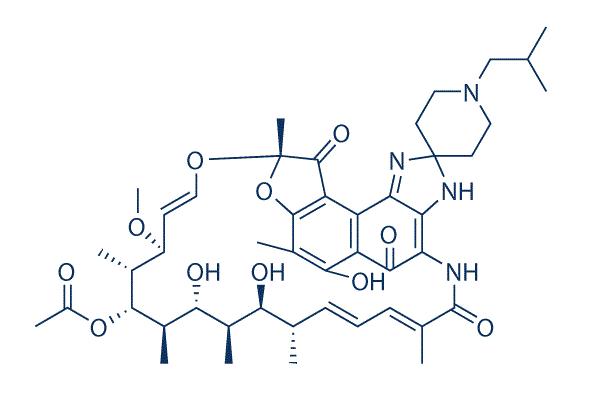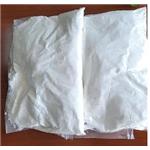Side-effects of rifabutin
Mar 28,2022
Similar to rifampicin, rifabutin (also known as ansamycin LM 427) is a derivative of rifamycin S. The most important property of this drug is that it is more active than rifampicin against Mycobacterium avium complex (MAC) in vitro, against this organism growing in alveolar macrophages, and in experimental animals. The chemical formula of rifabutin is C46H62N4O11 and its molecular weight is 277.23; its molecular structure is shown below.

Uses
Rifampicin is the rifamycin of choice for most patients with MAC lung disease, whereas rifabutin is generally used in treatment regimens for disseminated MAC disease.
Bioavailability
Rifabutin is absorbed after oral administration, but compared with rifampicin the serum levels attained are relatively low. The peak serum level, attained in 2–3 hours after an oral dose of 300 mg is only approximately 0.4 mg/ml. Doubling the dose to 600 mg, increases the peak serum level to about 0.6 mg/ml. The serum level thereafter falls and, 24 hours after the dose, it is approximately 0.1 mg/ml. The terminal half-life of this drug is as long as 36 hours. The drug is incompletely absorbed from the gastrointestinal tract, and its bioavailability after oral administration is only 12–20%. After continuous daily administration of rifabutin for 28 days, the area under the curve is lower than attained after the first dose, which suggests that rifabutin, similar to rifampicin, induces its own drugmetabolizing enzymes in the liver. Administration with food decreases the rate, but not the extent, of absorption of rifabutin, resulting in a lower Cmax and a longer tmax, but no change in AUC. Rifabutin is 72–85% bound to plasma proteins.
Side-effects
Some toxic effects, including gastrointestinal symptoms, uveitis, corneal deposits, neutropenia, polyarthralgia syndrome, and pseudojaundice, are associated with high rifabutin doses (Z600 mg/day) and coadministration with other CYP3A inhibitors such as clarithromycin, and may resolve with a reduction in rifabutin dosage.
Rifabutin, like rifampicin, causes an orange discoloration of body fluids (sputum, urine, sweat, tears), which is not harmful. Patients should be warned of this effect at the time treatment is begun. Soft contact lenses and clothing may be permanently stained. Although rash was initially reported to occur in as many as 4% of patients with advanced HIV infection, subsequent studies suggest that rash is only rarely (less than 0.1%) associated with rifabutin. There is one report of rifabutin-induced ageusia. Pseudojaundice (skin discoloration with normal bilirubin) is associated with high doses of rifabutin and resolves with discontinuation of the drug. Flu-like syndrome is rare (less than 0.1%) in patients taking rifabutin.
- Related articles
- Related Qustion
Itraconazole (Sporanoxs) is a synthetic triazole drug developed in the 1980s as the first orally bioavailable triazole agent. Similar to posaconazole, it contains a piperazine-phenyl-triazole side chain.....
Mar 28,2022APIMiconazole has a fungistatic effect on susceptible fungi by inhibiting sterol C-14 demethylation of lanosterol, resulting in ergosterol depletion in the fungal cell membrane.....
Mar 28,2022APIRifabutin
72559-06-9You may like
- Rifabutin
-

- $0.00 / 1Kg/Bag
- 2025-04-22
- CAS:72559-06-9
- Min. Order: 1g
- Purity: 95%-102%
- Supply Ability: 100kgs
- Rifabutin
-

- $1.00 / 1KG
- 2025-04-21
- CAS:72559-06-9
- Min. Order: 1KG
- Purity: 99%
- Supply Ability: 10 mt
- Rifabutin
-

- $0.00 / 25KG
- 2025-03-21
- CAS:72559-06-9
- Min. Order: 1KG
- Purity: 99%
- Supply Ability: 50000KG/month




